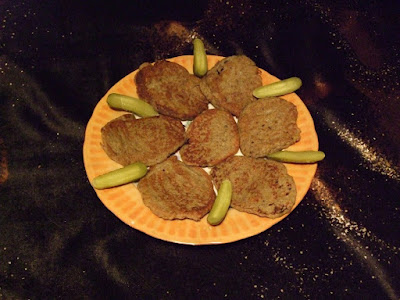Mohawk: sewahyowane
Blackfoot: ápasstaamiinaamm
Navaho: belasana
Anglonquin: waabimin
Ossetian: фæткъуы
Inuktitut: kimminaujaq
Polabian: jobkú
Votic: õuna
Livonian: umar
Apples are everywhere! In English in pineapple and aubergine (mad apple is one of its synonys), in French in potato (pomme de terre), in Old English in cucumber (eorþæppla)... but there is also apple mint... elephant apple... alligator apple... apple snail... apple of eye... apple of discord... apple butter... Adam's apple... Newton's apple... and... Ewa's baked apple :P Originally this Polish dessert is called apples in jackets or apples in dressing gowns (jabłka w koszulkach / jabłka w szlafrokach)
2 cups flour*
125 gr margarine
1 egg
1 egg yolk
1/2 cup powdered sugar
1 pack vanilla sugar or few drops vanilla aroma
3 tablespoons cream (should be thick)
salt ( pinch)
apples: about 8 (I can't tell you exactly; it depends on your apple's size)
1/2 cup marmalade, sour*
powdered sugar + cinnamon to sprinkle
+ flour to sprinkle the workplace
* the Polish name of the flour I used is krupczatka. I will not give you the number, cause the numeration differs depends on the country. Take the flour you would use to make shortcrust pastry: a grainy one (called semolina flour)
** homemade would be the best: I used homemade mirabelle jam, but gooseberry, sea-buckthorn and currant would be great too. If you don't have any of those, take bilberry or bramble or actually anything which is at least a little bit sour
1. Sieve flour, add cold margarine and hack with a knife. Usually it is not recommended to do it with hands because we don't want the margarine to melt with the warm of our hands, cause this dough has to be crunchy after baked. Add egg, yolk, 1/2 cup powdered sugar, vanilla sugar / aroma, cream, salt and knead fast with your hand (has to be done fast for the reason mentioned above). Let in the fridge until you are ready with apples, but the best would be to let it rest for at least 30 minutes
2. Peel apples, divide into halves and take the seeds off

3. Take small amounts of the dough from the fridge, roll them on the surface sprinkled with flour. Roll until thiner than 1/2 cm. Put a half of an apple in the middle, fill with marmalade and cover with the resting dough (see the picture, it serves better than my words :P)


4. Preheat your oven until 200-220C. Butter your tray and sprinkle it with semolina, breadcrumbs, coconut flakes or simply with flour. Bake about 15 minutes or until golden. When ready, sprinkle with sugar and / or cinnamon.












